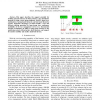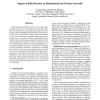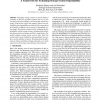DSN
2004
IEEE
14 years 3 months ago
2004
IEEE
The authors describe the use of bounded model checking (BMC) for verifying Web application code. Vulnerable sections of code are patched automatically with runtime guards, allowin...
DSN
2004
IEEE
14 years 3 months ago
2004
IEEE
Cyclic Redundancy Codes (CRCs) provide a first line of defense against data corruption in many networks. Unfortunately, many commonly used CRC polynomials provide significantly le...
DSN
2004
IEEE
14 years 3 months ago
2004
IEEE
This paper describes the support provided for mobility and fault tolerance in Mykil, which is a key distribution protocol for large, secure group multicast. Mykil is based on a com...
DSN
2004
IEEE
14 years 3 months ago
2004
IEEE
Advanced molecular nanotechnology devices are expected to have exceedingly high transient fault rates and large numbers of inherent device defects compared to conventional CMOS de...
DSN
2004
IEEE
14 years 3 months ago
2004
IEEE
Many classifications of attacks have been tendered, often in taxonomic form. A common basis of these taxonomies is that they have been framed from the perspective of an attacker
DSN
2004
IEEE
14 years 3 months ago
2004
IEEE
In this paper we present a data dissemination protocol for efficiently distributing data through a sensor network in the face of node and link failures. Our work is motivated by t...
DSN
2004
IEEE
14 years 3 months ago
2004
IEEE
DSN
2004
IEEE
14 years 3 months ago
2004
IEEE
Multi-homed and overlay networks are two widely studied approaches aimed at leveraging the inherent redundancy of the Internet's underlying routing infrastructure to enhance ...
DSN
2004
IEEE
14 years 3 months ago
2004
IEEE
Designing storage systems to provide business continuity in the face of failures requires the use of various data protection techniques, such as backup, remote mirroring, point-in-...
DSN
2004
IEEE
14 years 3 months ago
2004
IEEE
Recent developments in the field of object-based fault tolerance and the advent of the first OMG FTCORBA compliant middleware raise new requirements for the design process of dist...



